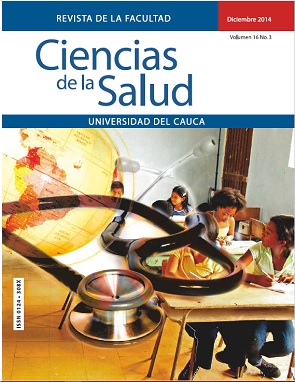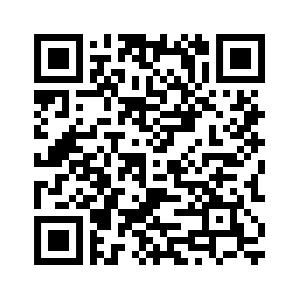Videolaryngoscope: Uses in different clinical settings
Abstract
Background: Complications originated in the handling of the airway represent an important cause of morbimortality associated to anesthesia. Is possible that Videolaryngoscopes make this handling easier in some specific scenarios could be better than direct laryngoscopy. The aim of this study is to present a narrative review of the different indications of use of videolaryngoscope in a variety of clinical settings. Methods: We made a nonsystematic review of literature using the Pubmed/MEDLINE database; to search studies that had as a central topic the use of videolaryngoscopes in difficult airway. Results: 21 articles were included in the final review process. Specific situations in which the videolaryngoscope becomes important were found, such as predicted difficult intubation using airway evaluation scales, patients with morbid-obesity, ICU patients, those with cervical immobilization indications and as a rescue in failed intubations using direct laryngoscopy. In addition, we found that videolaryngoscopes have a high rate of success when used by untrained and inexperienced personnel in airway handling. Conclusion: Videolaryngoscope provided greater benefits when used in specific clinical scenarios. A rigorous review is necessary to recommend the use of this new technology.Downloads
References
Departamento de anestesiología Universidad Nacional de Colombia. Recomendaciones prácticas de manejo de la vía aérea. Disponible en: http://www.anestesianet.com/unal/via_aerea.htm (Consultado el 30 Octubre de 2014).
Cooper RM, Pacey JA, Bishop MJ, McCluskey SA. Early clinical experience with a new videolaryngoscope (GlideScope ®) in 728 patients. Can J Anaesth. 2005;52(2):191-8.
Gupta AK, Ommid M, Nengroo S, Naqash I, Mehta A. Predictors of difficult intubation: Study in Kashmiri population; Br J Med Practitioners. March 2010;3(1):307.
Vasudevan A, Badhe A. Predictors of difficult intubation: a simple approach. The Internet Journal Of Anesthesiology; 2008;20(2).
Griesdale DE, Liu D, McKinney J, Choi PT. Glidescope® video-laryngoscopy versus direct laryngoscopy for endotracheal intubation: a systematic review and metaanalysis. Can J Anaesth. 2012;59(1):41-52.
American Society of Anesthesiologists Task Force on Management of the Difficult Airway. Practice guidelines for management of the difficult airway: an updated report by the American Society of Anesthesiologists Task Force on Management of the Difficult Airway. Anesthesiology. 2013;118(2):251-70.
Orozco-Díaz E, Alvarez-Ríos JJ, Arceo-Díaz JL, Ornelas-Aguirre JM. Predictive factors of difficult airway with known assessment scales. Cir Cir. 2010;78(5):393-9.
Noppens RR, Möbus S, Heid F, Schmidtmann I, Werner C, Piepho T. Evaluation of the McGrath Series 5 videolaryngoscope after failed direct laryngoscopy. Anaesthesia. 2010;65(7):716-20.
Serocki G, Neumann T, Scharf E, Dörges V, Cavus E. Indirect videolaryngoscopy with C-MAC D-Blade and Glide-Scope: a randomized, controlled comparison in patients with suspected difficult airways. Minerva Anestesiol. 2013;79(2):121-9.
Sun DA, Warriner CB, Parsons DG, Klein R, Umedaly HS, Moult M. The GlideScope Video Laryngoscope:
randomized clinical trial in 200 patients. Br J Anaesth. 2005;94(3):381-4.
Díaz-Gómez JL, Satyapriya A, Satyapriya SV, Mascha EJ, Yang D, Krakovitz P, et al. Standard clinical risk factors for difficult laryngoscopy are not independent predictors of intubation success with the GlideScope. J Clin Anesth. 2011;23(8):603-10.
Abdellatif AA, Ali MA. GlideScope videolaryngoscope versus flexible fiberoptic bronchoscope for awake intubation of morbidly obese patient with predicted difficult intubation. Middle East J Anaesthesiol. 2014;22(4):385-92.
Dhonneur G, Abdi W, Ndoko SK, Amathieu R, Risk N, El Housseini L, et al. Video-assisted versus conventional tracheal intubation in morbidly obese patients. Obes Surg. 2009;19(8):1096-101.
Paolini JB, Donati F, Drolet P. Review article: video-laryngoscopy: another tool for difficult intubation or a
new paradigm in airway management? Can J Anaesth. 2013;60(2):184-91.
Moore AR, Schricker T, Court O. Awake videolaryngoscopy-assisted tracheal intubation of the morbidly obese. Anaesthesia. 2012;67(3):232-5.
Nicholson A, Smith AF, Lewis SR, Cook TM. Tracheal intubation with a flexible intubation scope versus other intubation techniques for obese patients requiring general anaesthesia. Cochrane Database Syst Rev. 2014; 17(1)1.
Ilyas S, Symons J, Bradley WP, Segal R, Taylor H, Lee K, et al. A prospective randomised controlled trial comparing tracheal intubation plus manual in-line stabilisation of the cervical spine using the Macintosh laryngoscope vs the McGrath(®) Series 5 videolaryngoscope. Anaesthesia. 2014;69(12):1345-50.
Rothfield, K. MD. The Video Laryngoscopy Market: Past,Present, and Future. Anesthesiology News Guide to
Airway Management. 2014; 40(8): 29-34.
Mosier JM, Whitmore SP, Bloom JW, Snyder LS, Graham LA, Carr GE, et al. Video laryngoscopy improves intubation success and reduces esophageal intubations compared to direct laryngoscopy in the medical intensive care unit. Crit Care. 2013 14;17(5):R237.
De Jong A, Clavieras N, Conseil M, Coisel Y, Moury PH, Pouzeratte Y, et al. Implementation of a combo videolaryngoscope for intubation in critically ill patients: a before-after comparative study. Intensive Care Med. 2013;39(12):2144-52.
Ural K, Subaiya C, Taylor C, Ramadhyani U, Scuderi-Porter H, Nossaman BD. Analysis of orotracheal intubation techniques in the intensive care unit. Crit Care Resusc. 2011;13(2):89-96.
Cheesman K, Brady JE, Flood P, Li G. Epidemiology of anesthesia-related complications in labor and delivery, New York State, 2002-2005. Anesth Analg. 2009 Oct;109(4):1174-81.
Kilicaslan A, Topal A, Tavlan A, Erol A, Otelcioglu S. Effectiveness of the C-MAC video laryngoscope in the management of unexpected failed intubations. Braz J Anesthesiol. 2014 Jan-Feb;64(1):62-5.
Aziz MF, Healy D, Kheterpal S, Fu RF, Dillman D, Brambrink AM. Routine clinical practice effectiveness of the Glidescope in difficult airway management: an analysis of 2,004 Glidescope intubations, complications, and failures from two institutions. Anesthesiology. 2011 Jan;114(1):34-41.
Healy DW, Maties O, Hovord D, Kheterpal S. A systematic review of the role of videolaryngoscopy in successful orotracheal intubation. BMC Anesthesiol. 2012 Dec 14;12:32.
Aziz MF, Dillman D, Fu R, Brambrink AM. Comparative effectiveness of the C-MAC video laryngoscope versus direct laryngoscopy in the setting of the predicted difficult airway. Anesthesiology. 2012 Mar;116(3):629-36.
Niforopoulou P, Pantazopoulos I, Demestiha T, Koudouna E, Xanthos T. Video-laryngoscopes in the adult airway management: a topical review of the literature. Acta Anaesthesiol Scand. 2010 Oct;54(9):1050-61.
Chemsian R, Bhananker S, Ramaiah R. Videolaryngoscopy. Int J Crit Illn Inj Sci. 2014 Jan;4(1):35-41.
Hoshijima H, Kuratani N, Hirabayashi Y, Takeuchi R, Shiga T, Masaki E. Pentax Airway Scope® vs Macintosh laryngoscope for tracheal intubation in adult patients: a systematic review and meta-analysis. Anaesthesia. 2014 Aug;69(8):911-8.
Hsu HT, Chou SH, Wu PJ, Tseng KY, Kuo YW, Chou CY, et al. Comparison of the GlideScope® videolaryngoscope and the Macintosh laryngoscope for double-lumen tube intubation. Anaesthesia. 2012 Apr;67(4):411-5.












.png)



